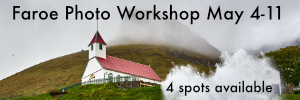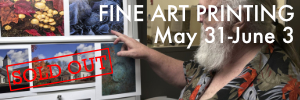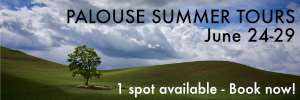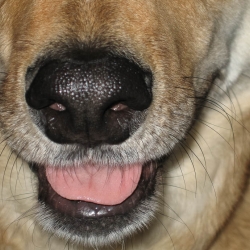Dave Chew
Forum Replies Created
-
AuthorTopic: Photo Chat With Dan (Dano) Steinhardt – April 24, 2024 at 2 PM (EST) Read 0 Times
-
Mastering The Art Of Photographic Composition – Part Oneon: May 4, 2022 at 1:43 pm
Lovely pictures and an interesting article. Thank you.
Just one small and, I’m sorry, pedantic point. Lenses do not change perspective, only where we take the photograph from changes our perspective. Different focal length lenses allow us to select what part of that perspective we want in our picture or image.
Channeling my inner Ansel Adams…
-
This topic was modified 1 year, 11 months ago by
Simon Simpson.
-
This topic was modified 1 year, 11 months ago by
Christopher Sanderson. Reason: Removed HTML style formatting. Please do not paste formatted text
-
This topic was modified 1 year, 11 months ago by
Christopher Sanderson.
“Different focal length lenses allow us to select what part of that perspective we want in our picture or image.” I struggle trying to explain this; I like the way you worded that; very clear.
Dave
How glorious a greeting the sun gives the mountains! - John Muir
https://www.davechewphotography.com
Find legacy Schneider-Kreuznach Apo-Digitar lens data here: https://www.davechewphotography.com/skdata/-
This reply was modified 1 year, 11 months ago by
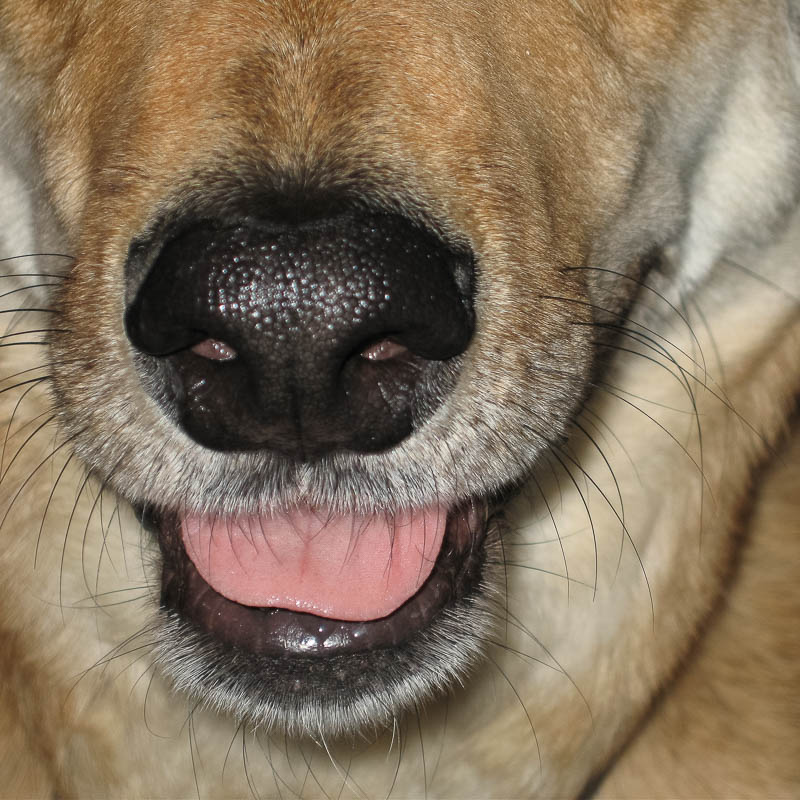 Dave Chew.
Dave Chew.
in reply to: Let me introduce you too… #54089Re: Let me introduce you too…Reply #1 on: May 3, 2022 at 10:16 amThose are wonderful, Jeff. Thank you for posting this.
Dave
How glorious a greeting the sun gives the mountains! - John Muir
https://www.davechewphotography.com
Find legacy Schneider-Kreuznach Apo-Digitar lens data here: https://www.davechewphotography.com/skdata/Re: Field Techniques for Technical Cameras – Lenses and AccessoriesReply #2 on: May 1, 2022 at 2:57 pmFocusing is indeed a very different experience vs large format film. I have very little experience using large format; just a few trials and tests. The simple act of zooming in and out seems so much more cumbersome that positioning a loupe around the screen. I don’t know if it really is, but it feels that way. That tiny screen definitely doesn’t help. As one of my fellow photographer friends likes to point out, the screen on the IQ4 is like 10 iPhone generations old. Crazy P1 didn’t upgrade it at some point. They must have placed a 100,000 unit order 12 years ago and are still burning through them.
From my perspective, I don’t think of focusing with the technical camera as being more difficult than on my Sony a7r cameras. I’ve used an XF but never owned one. Aside from my original Monochrom, I haven’t used an optical viewfinder in a while. I may just not know what I’m missing. On the other hand, the only time I open up a file and say, “Crap; I missed focus on that one,” is when I was trying some thing sketchy with tilt or I totally forgot to focus. Unfortunately the latter happens usually once during a shoot!
Capture Integration is wonderful, but I agree trial and experimentation is the crux problem for those who want to learn more. There are many things unique to each system that we users accept and/or take for granted that someone new to the cameras can’t possibly anticipate. For example, I don’t think twice about taking off the back to rotate it, while others hate the thought.
I don’t know anyone who is an expert at all the systems except for maybe Steve or Brad. I know Alpa intimately and Cambo pretty well, but struggle with details on Arca-Swiss. Lack of a website doesn’t help either.
I have thought of getting some people together to do a series of videos specific to technical cameras. Fireside chat sort of things like what Kevin did with On the Rocks, Tim Parkin or the two guys at Leica Miami. I know plenty of Cambo users, but I’d have to find an Rm3di user. It’s just that the interest is probably pretty low vs the amount of work involved. A zoom format might work too. Equipment would have to be available so people could see how things set up and work.
If I could get Steve and Dave G to be interested… You know they used to support a workshop where people could try out equipment. Maybe something like that but virtual that featured actual users. We users could use our own equipment while CI fills in the gaps with their involvement.
More ideas than time, I’m afraid. Regardless, I’d be happy to get on a video call with you or anyone else who wants to see some hands on details. I’ve got a few Alpa’s and a Cambo Actus lying around.
Dave
How glorious a greeting the sun gives the mountains! - John Muir
https://www.davechewphotography.com
Find legacy Schneider-Kreuznach Apo-Digitar lens data here: https://www.davechewphotography.com/skdata/Re: Field Techniques for Technical Cameras – Lenses and AccessoriesReply #3 on: May 1, 2022 at 12:44 amHi Michael,
First, I apologize for missing your post for so long. I thought I subscribed to all the relevant threads but I missed doing that for this one. I was not planning on more detail associates with camera choice, but perhaps I should. I think there are a few areas that could use more discussion:
- As you point out, how tilt is applied in each system and the associated advantages of each approach.
- The type and amount of movements that can be done with each system. I touched on this a little, but this is so important it could use additional focus.
- Packaging: Weight, space, design, extra parts, accessories, etc.
Since you brought up tilt, I will add a bit here and start with the three primary helical systems. None of the helical-based systems do true axis tilt. I will orient “x” along the length of the lens and “y” vertically. All three systems (Arca/Alpa/Cambo) tilt at the “y” centerline vertically. Because the adjustment knob is at the top, a lot of people think Alpa tilts from a hinge at the bottom of their tilt adapters but they actually don’t; they tilt on the center line “y” axis just like Arca and Cambo. There is a hinge point in the center of Alpa’s T/S adapters about which the adapter tilts and/or swings. All Cambo’s lens mounts tilt in a similar way. Arca’s tilt that is built into the body is also hinged around the lens axis. So from the standpoint of this “y” axis, all the systems are “axis tilt” not “base tilt.”
I believe all the bellows-type systems discussed (Arca-Swiss, Cambo Actus, Linhof Techno) can be Axis tilt in that the tilt is designed around the lens board centerline. The tilt mechanism is down below near the base rail, but they are designed to rotate about a radius origin in the middle of the lens board. I think Arca’s default is base tilt, but you can get the optional Orbix for axis tilt.
None of the helical-based systems tilt along the “x” axis lens centerline; they are all behind the lens to some degree. Each of the “big three” tilt around different points on their helical systems. Cambo is closest to what would be the “x” axis “lens board” centerline since the tilt mechanism is relatively close to the lens elements. Alpa depends on the lens; shorter lenses are about the same as Cambo, while the longer lenses can be pretty far from the lens elements. Arca-Swiss, being in the camera body, is the furthest away. If axis tilt is important factor, then I would suggest a bellows system since none of the helical based systems have true axis tilt. This has never bothered me too much. Again, the closest helical system to axis tilt would be Cambo. There are two good pages that delve into the details of axis vs base tilt here:
https://www.largeformatphotography.info/how-to-focus.html
https://lensnotes.com/articles/principles-of-view-camera-focus/
For me, the biggest differences in tilt between the helical systems are:
- Alpa cannot tilt Schneider lenses wider than 60mm because there is no room for the TS adapter. If you need to tilt with wide Schneider lenses, then Alpa is out.
- With Cambo, you have to purchase the tilt shift mount with every lens; this adds cost and weight. With Alpa, you need to purchase the 17mm TS adapter and make sure all your lenses are purchased with the short-barrel (SB) mount version. With Arca-Swiss, you get it for “free” in the camera; no additional accessories needed.
- With Alpa, you do have the option to tilt or swing the back as well as the lens by simply moving the TS adapter to the back of the camera.
You asked about my specific choice: I don’t shoot wide that often so this Schneider limitation was outweighed by some of the other features Alpa has that were more important to me.
Dave
Edit: Cleaned this up a lot from the original post; it was late last night!
How glorious a greeting the sun gives the mountains! - John Muir
https://www.davechewphotography.com
Find legacy Schneider-Kreuznach Apo-Digitar lens data here: https://www.davechewphotography.com/skdata/-
This reply was modified 1 year, 11 months ago by
 Dave Chew.
Dave Chew.
-
This reply was modified 1 year, 11 months ago by
 Dave Chew.
Dave Chew.
-
This reply was modified 1 year, 11 months ago by
 Dave Chew.
Dave Chew.
-
This reply was modified 1 year, 11 months ago by
 Dave Chew.
Dave Chew.
-
This reply was modified 1 year, 11 months ago by
 Dave Chew.
Dave Chew.
-
This reply was modified 1 year, 11 months ago by
 Dave Chew.
Dave Chew.
-
This reply was modified 1 year, 11 months ago by
 Dave Chew.
Dave Chew.
in reply to: Field Techniques for Technical Cameras #53891Re: Field Techniques for Technical CamerasReply #4 on: April 29, 2022 at 4:24 pmHi Ralph,
Thank you for the comments. I’m glad you got some value from the article. I’ve spent the majority of my life in and around Geauga County.
Indeed, mistakes are valuable opportunities. One of my favorite quotes: Experience is the ability to recognize a mistake the second time you make it.
DaveHow glorious a greeting the sun gives the mountains! - John Muir
https://www.davechewphotography.com
Find legacy Schneider-Kreuznach Apo-Digitar lens data here: https://www.davechewphotography.com/skdata/Re: Field Techniques for Technical Cameras – Lenses and AccessoriesReply #5 on: March 2, 2022 at 3:57 pmHi Benoit,
Thank you for the comment. You are very welcome; I am glad to have the opportunity to write about this topic. What wonderful, creative photos on that Cambo page!
Your comment in the text resonated with me: “When I started my still life project I quickly became very frustrated with being stuck with a camera that only knew fixed parallel planes. I felt like I was working with a shoebox.”
That mirrors my feelings of liberation when working with technical cameras. I am sure there are come carpenters who feel a nail gun frees them to work better, while others feel an old hammer frees them. I think it is important to find the tools that work with you, no matter what those tools are.
Ciao,
Dave
How glorious a greeting the sun gives the mountains! - John Muir
https://www.davechewphotography.com
Find legacy Schneider-Kreuznach Apo-Digitar lens data here: https://www.davechewphotography.com/skdata/Re: Field Techniques for Technical Cameras – Lenses and AccessoriesReply #6 on: March 1, 2022 at 10:34 amHi Anders,
Thank you for the comments; I am glad you found it helpful. I wish it was easier to demo and experiment with them. The best option is a good dealer that offers several options. Second is to find a photographer friend who has one, but chances are that friend won’t have several for you to compare. At least you would get some understanding of how you get along with them in the field.
I do hope that the next few articles communicate a bit of that: what to expect when using them in the field.
Dave
How glorious a greeting the sun gives the mountains! - John Muir
https://www.davechewphotography.com
Find legacy Schneider-Kreuznach Apo-Digitar lens data here: https://www.davechewphotography.com/skdata/-
This reply was modified 2 years, 1 month ago by
 Dave Chew.
Dave Chew.
in reply to: Color Science With Jeff and Dano #49689Re: Color Science With Jeff and DanoReply #7 on: February 22, 2022 at 5:07 pmWow…Michael Durr did a great job of editing!!!
We almost sound like we know what we’re talking about…
But I really gotta talk to you about that creepy humanoid creature with the fireman’s hat you have in your studio…not you Kevin, the wooden one :~)
Kevin, you really should put a Hawaiian shirt on that humanoid creature.
Dave
How glorious a greeting the sun gives the mountains! - John Muir
https://www.davechewphotography.com
Find legacy Schneider-Kreuznach Apo-Digitar lens data here: https://www.davechewphotography.com/skdata/in reply to: Learning Street Photography #48934Re: Learning Street PhotographyReply #8 on: February 4, 2022 at 11:59 amI love reading Russ’ articles. Practical and to the point. I need to get out more and do this. I keep remembering Michael’s walks in Mexico and other places. Thank you, Russ and thank you, Kevin. I’m inspired, which is a big part of the whole point of this place.
For some reason, I’ve always connected more with the b&w “street” images, and that holds true even for this article. Maybe it has something to do with Russ’ point about ambiguity.
Ciao,
Dave
How glorious a greeting the sun gives the mountains! - John Muir
https://www.davechewphotography.com
Find legacy Schneider-Kreuznach Apo-Digitar lens data here: https://www.davechewphotography.com/skdata/in reply to: Intro To Imageprint #48807Re: Intro To ImageprintReply #9 on: February 1, 2022 at 8:08 pmHi Dave
I am uncertain as to the reason, but WordPress in its limited wisdom decided that your post (and subsequent re-post) was spam. I have restored it to legitimacy.
Apologies.Thank you, Chris. I wonder if it was because I went to make an edit almost immediately after posting. Maybe it thought I was a robot.
DaveHow glorious a greeting the sun gives the mountains! - John Muir
https://www.davechewphotography.com
Find legacy Schneider-Kreuznach Apo-Digitar lens data here: https://www.davechewphotography.com/skdata/in reply to: Intro To Imageprint #48786Re: Intro To ImageprintReply #10 on: February 1, 2022 at 9:39 amI’ve been using ImagePrint on and off for several years. Previously on an Epson 7900, now on a Canon 4100. My workflow is a hybrid between C1 and LR. My master catalog is in LR, but my images start out in C1. I have LR, ImagePrint and Qimage One at my disposal and use all three tools depending on what and why I’m printing. I wavered back and forth on whether to upgrade my IP Black license to 44″ when I got the Canon, but ultimately did get the license. Why:
- ImagePrint has some workflow advantages (speed) when doing repetitive printing. For example, when printing things like Folio images 2 or 4-up on a 17×22 sheet with crop marks, the layout tools make life so much easier. You can print crop marks in LR, but the controls are very crude and it doesn’t give me the options I need for positioning. Christmas cards are another application. Kevin prints a lot of small images for those tin boxes, etc. I’m with him for for situations like that.
- I have a few standard papers I use: Canson Infinity Baryta Prestige, Epson Legacy Fiber, HFA Baryta Satin. I had Andrew create custom profiles for me on those standard papers. When printing one-off images using those standard papers, I’ve settled on Qimage One (Mac) using Andrew’s wonderful custom profiles. Qimage One has what appears to me to be excellent output sharpening. The combination of Andrew’s profiles, the limited but effective layout options / interface in Qimage One and a low cost of entry is a very compelling option that outputs the best prints I am able to produce. But, when it comes to working outside of those standard papers, I find the results I get out of ImagePrint, especially matte papers, to be > 98% of what I get using the best custom profiles in a fraction of the time. Something I can see on close inspection, but most viewers will never notice.
- The B&W narrow gamut process is highly controllable and easy to use. LR’s split toning can get similar results, but the controls have much less customization.
Does that make it worth the price of admission? Highly debatable. It does for me, but it wasn’t an obvious easy decision when I upgraded to a 44″ license. And, I knew exactly what ImagePrint offered when I upgraded because I had been using it for many years with my 7900. If someone requests a print with a particular paper texture, I am thankful to have ImagePrint available to make that print. If I’m making 20 different large prints for an office, it will be Qimage One. A batch of folios, ImagePrint every time.
Dave
How glorious a greeting the sun gives the mountains! - John Muir
https://www.davechewphotography.com
Find legacy Schneider-Kreuznach Apo-Digitar lens data here: https://www.davechewphotography.com/skdata/-
This reply was modified 2 years, 2 months ago by
 Dave Chew.
Dave Chew.
in reply to: CaptureOne Pro 21 is here! #30613Re: CaptureOne Pro 21 is here!Reply #11 on: December 8, 2020 at 9:23 pmI do like the ProStandard profile better. Not sure how to quantify it, but I’ve been using my own profile created with Lumariver.
My understanding is that Lumariver is like XRite ICC profiling on steroids. If you use a custom profile, then you wouldn’t be using the C1 provided Generic or ProStandard profiles – right? (After all, these are still all ICC standard profiles.) I understand that some photographers make custom profiles for different conditions (golden hour, daylight, cloudy, etc.) – do you do that? If so, I’d like to hear how ProStandard compares to a Lumariver custom profile tuned for different conditions.
I have an XRite Color Checker – but gave up on using custom profiles. I do landscape and I make a lot of color adjustments – so what’s the point? ProStandard may be all I need. I do, however, understand that custom profiles would be useful for product photography and studio work.
-
This reply was modified 3 years, 4 months ago by
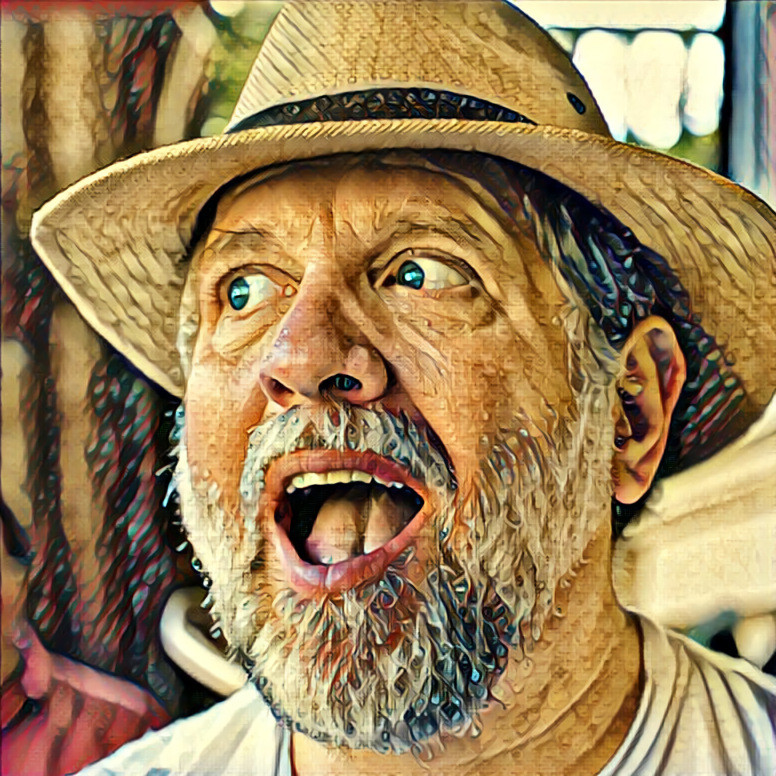 John Sadowsky.
John Sadowsky.
I have two Lumariver profiles: one for a specific studio situation (leather samples lit with Fiilex LED lights), and a second for overcast light. I always felt greens come out too yellow in overcast lighting using the canned profiles from Phase. There are fixes using the color editor but it takes valuable time. The first one works great for that controlled situation. Subtle differences in leather finishes can be reproduced well. The overcast light works well for overcast light, and eliminates the too-yellow cast (my opinion), but it doesn’t work too well in dramatic sunset light. this new ProStandard seems to handle all outdoor situations much better. I would still use the Fiilex-specific Lumariver profile, but maybe not the overcast profile.
Dave
How glorious a greeting the sun gives the mountains! - John Muir
https://www.davechewphotography.com
Find legacy Schneider-Kreuznach Apo-Digitar lens data here: https://www.davechewphotography.com/skdata/-
This reply was modified 3 years, 4 months ago by
 Dave Chew.
Dave Chew.
-
This topic was modified 1 year, 11 months ago by
-
AuthorPosts

